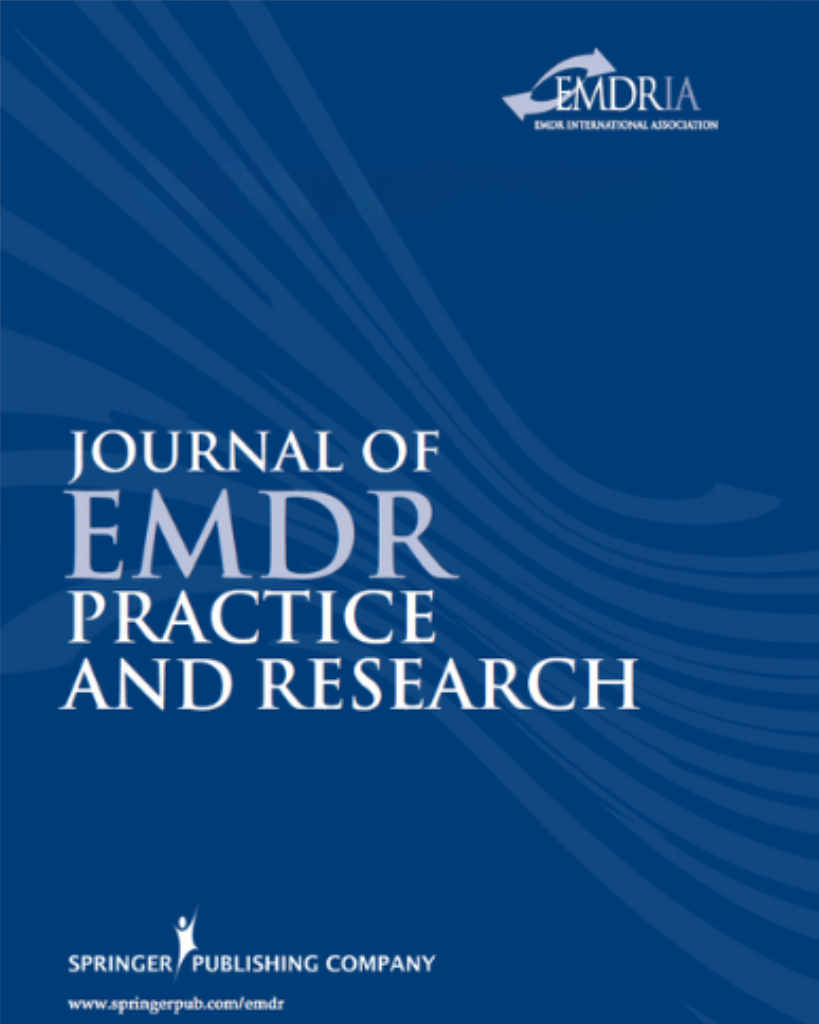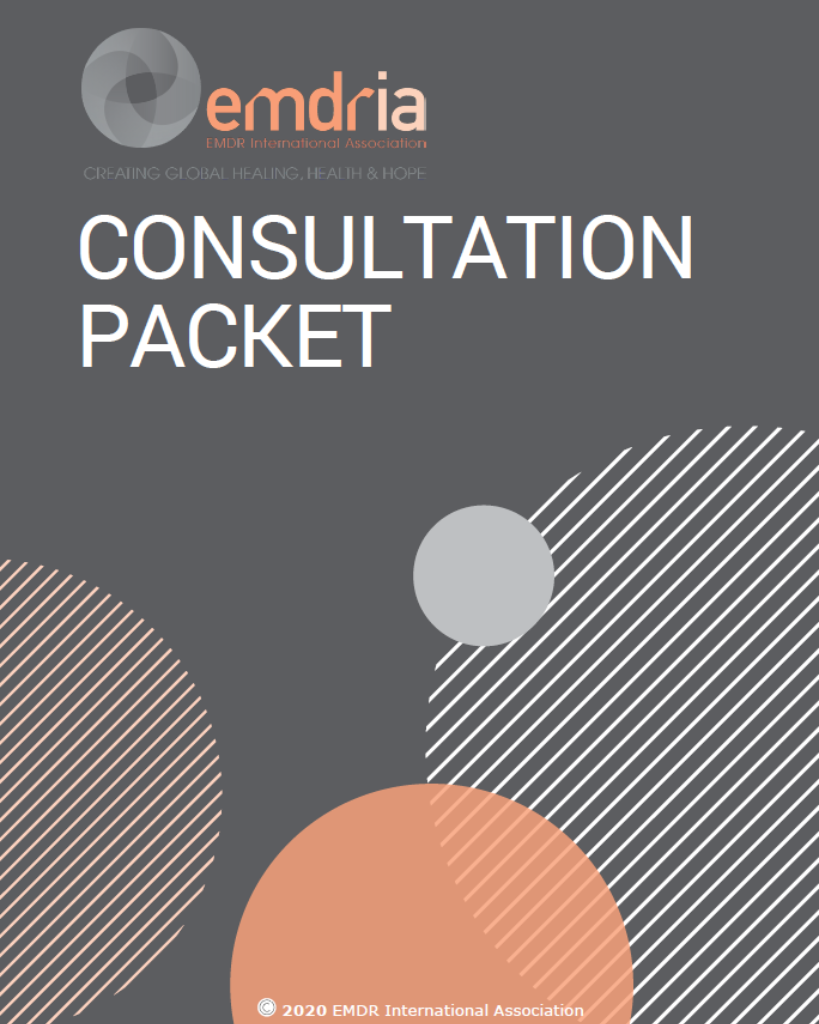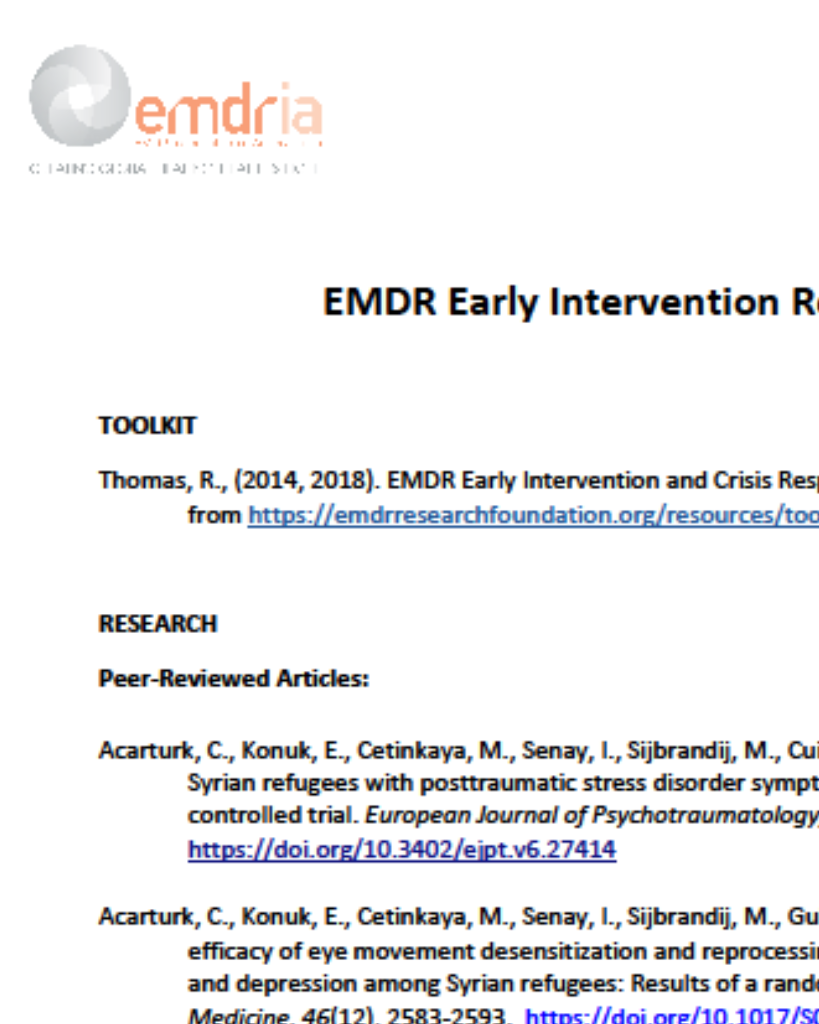A Single-Case fMRI Study EMDR Treatment of a Patient With Posttraumatic Stress Disorder
Study of EMDR with auditory alternating bilateral stimulation (ABS) using functional magnetic resonance imaging (fMRI) of brain activations.
Article Abstract
“This study assessed the effects of a session of eye movement desensitization and reprocessing (EMDR) with auditory alternating bilateral stimulation (ABS) using functional magnetic resonance imaging (fMRI) of brain activations. A case study was conducted with a female participant who was suffering from posttraumatic stress disorder following a severe assault. The fMRI scan began with safe-place imagery, for purposes of comparison, and then attention to the trauma memory without ABS. After this, ABS was provided as she began using EMDR procedures to process the traumatic memory. At postsession, the traumatic memory showed robust and significant changes on self-report measures. The initiation of the EMDR protocol with provision of ABS was associated with a marked change in brain activation within the prefrontal cortex demonstrating a ventromedial shift. The authors argue that the structure of the EMDR protocol encourages such a ventromedial activation, which is then intensified by ABS to overcome the block to information processing that has been preventing natural healing from occurring spontaneously.”
—Description from publisher
Article Access
Open Access
Richardson, P., Williams, S. R., Hepenstall, S., Gregory, L., McKie, S., & Corrigan, F. (2009). A Single-Case fMRI Study EMDR Treatment of a Patient With Posttraumatic Stress Disorder. Journal of EMDR Practice and Research, 3(1), 10–23. https://doi.org/10.1891/1933-3196.3.1.10
About the Journal
Journal of EMDR Practice and Research (JEMDR) is a peer-reviewed publication devoted to integrative, state-of-the-art papers about EMDR therapy. It is a broadly conceived interdisciplinary journal that stimulates and communicates research and theory about EMDR therapy and its application to clinical practice. JEMDR is the official publication of the EMDR International Association.
Date
February 1, 2009
Creator(s)
Paul Richardson, Steve R. Williams, Sam Hepenstall
Contributor(s)
Lloyd Gregory, Shane McKie, Frank Corrigan
Practice & Methods
BLS, Mechanisms of Action, Neurobiology
Extent
14 pages
Publisher
Springer Publishing Company
Rights
Copyright © 2009 EMDR International Association
APA Citation
Richardson, P., Williams, S. R., Hepenstall, S., Gregory, L., McKie, S., & Corrigan, F. (2009). A Single-Case fMRI Study EMDR Treatment of a Patient With Posttraumatic Stress Disorder. Journal of EMDR Practice and Research, 3(1), 10–23. https://doi.org/10.1891/1933-3196.3.1.10
Series
3
Installment
1
Audience
EMDR Therapists
Language
English
Content Type
Article, Peer-Reviewed
Original Source
Journal of EMDR Practice and Research
Access Type
Open Access





